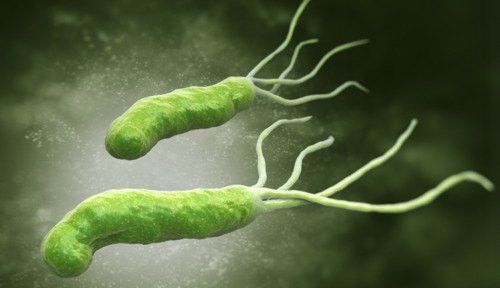While often harmless, Helicobacter pylori (H. pylori) can cause significant problems when it turns pathogenic, leading to conditions such as gastritis, peptic ulcers and even gastric cancer. Its discovery in 1982 by Barry Marshall and Robin Warren reshaped the medical field’s understanding of stomach diseases, earning them the Nobel Prize in 2005.
A Long History of Coexistence
H. pylori is one of the most widespread infections globally, affecting over half the world’s population. Despite its prevalence, many people remain asymptomatic, with the bacterium residing in their stomachs unnoticed for years. However, for those less fortunate, H. pylori can trigger persistent symptoms such as abdominal discomfort, bloating, nausea and in severe cases, ulcers or malignancies.
The bacterium spreads primarily through contaminated food, water and close human contact, such as sharing utensils or drinking from the same glass. While more common in regions with inadequate sanitation, H. pylori observes no borders—it’s a global concern.
Diagnosing H. pylori: Modern Approaches
Precise diagnosis is essential for effective treatment and today’s diagnostic approaches can be broadly categorised into non-invasive and invasive methods:
- Non-Invasive Tests:
- Urea Breath Test: This test measures carbon dioxide in the breath after the patient consumes a urea solution. If H. pylori is present, it metabolises the urea, producing detectable carbon dioxide.
- Stool Antigen Test: A straightforward test that identifies H. pylori antigens in stool samples, ideal for confirming active infections.
- Serological Testing: EUROIMMUN’s Anti-H. pylori ELISA allows the detection of antibodies in the blood, distinguishing between past and current infections with high sensitivity and specificity.
- Invasive Methods:
- Endoscopy with Biopsy: For more complex cases, tissue samples taken during endoscopy can be analysed for the presence of H. pylori using histological or urease testing.
- Culture and Histology: These methods provide precise insights but are typically reserved for patients requiring detailed diagnosis.
EUROIMMUN’s serological assays are particularly valuable in clinical practice, offering reliable results with user-friendly workflows, helping healthcare professionals make timely and accurate diagnoses.
Treatment and Prevention
Once diagnosed, H. pylori infections are treatable with a combination of antibiotics and proton pump inhibitors (PPIs) to reduce stomach acid, allowing the stomach lining to heal. This treatment, often called triple or quadruple therapy, has a high success rate when followed correctly. However, completing the full course of antibiotics is critical to prevent antibiotic resistance and recurrence.
Preventing H. pylori involves simple but effective measures: regular handwashing, consuming safe food and water, and avoiding the sharing of utensils. While there’s currently no vaccine, research is ongoing, with promising developments on the horizon.
A Nobel-Winning Experiment
Barry Marshall’s dedication to proving H. pylori’s role in gastric diseases was nothing short of daring. To silence sceptics, he famously drank a solution containing the bacterium, intentionally infecting himself. Within days, he developed gastritis symptoms, providing irrefutable evidence of H. pylori's link to stomach inflammation. His self-experiment not only reshaped medical understanding but also paved the way for life-saving treatments.
Did You Know?
Interestingly, scientists have used H. pylori’s genetic traces to study ancient human migration patterns. This bacterium not only tells a medical story but also offers clues about our ancestors’ journeys across continents.
A Modern Approach to an Ancient Problem
H. pylori remains a significant yet often overlooked cause of stomach diseases. Thanks to advances in diagnostics, healthcare professionals can detect and treat infections more efficiently than ever. Early diagnosis and treatment are key to managing this common infection and preventing its more serious complications. With continued innovation and research, we’re well-positioned to stay ahead of this enduring bacterial challenge.
Sources
- Marshall, B. J., & Warren, J. R. (1984). Unidentified curved bacilli in the stomach of patients with gastritis and peptic ulceration. The Lancet.
- National Institutes of Health (NIH) – H. pylori and Peptic Ulcer Disease.
- EUROIMMUN Diagnostics – Product Literature on Anti-H. pylori ELISA.
- World Health Organization (WHO) – Helicobacter pylori: Fact Sheet.
- Nobel Prize – The Discovery of H. pylori and its Role in Gastritis and Peptic Ulcer Disease.


















